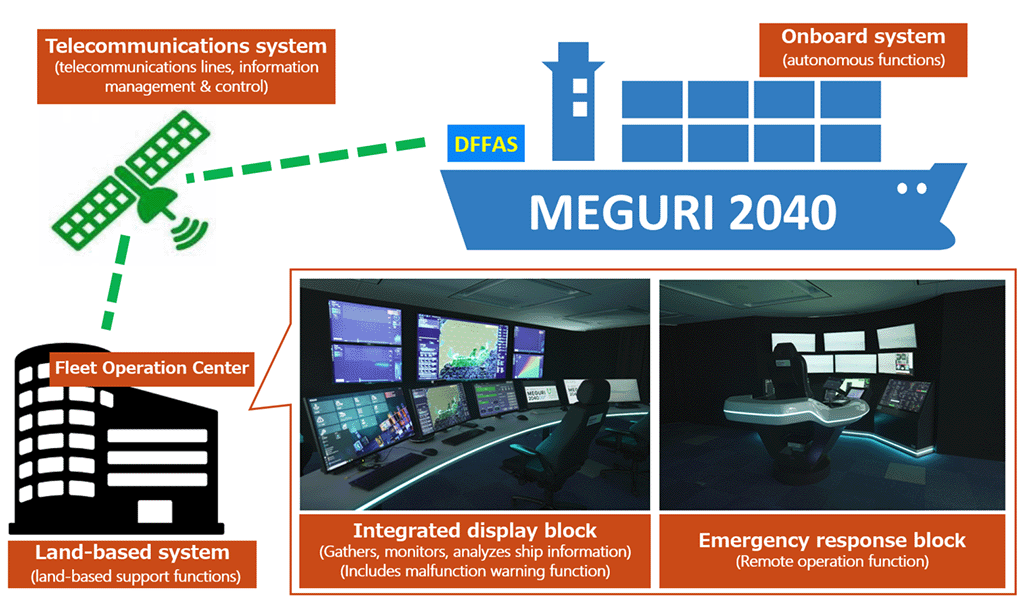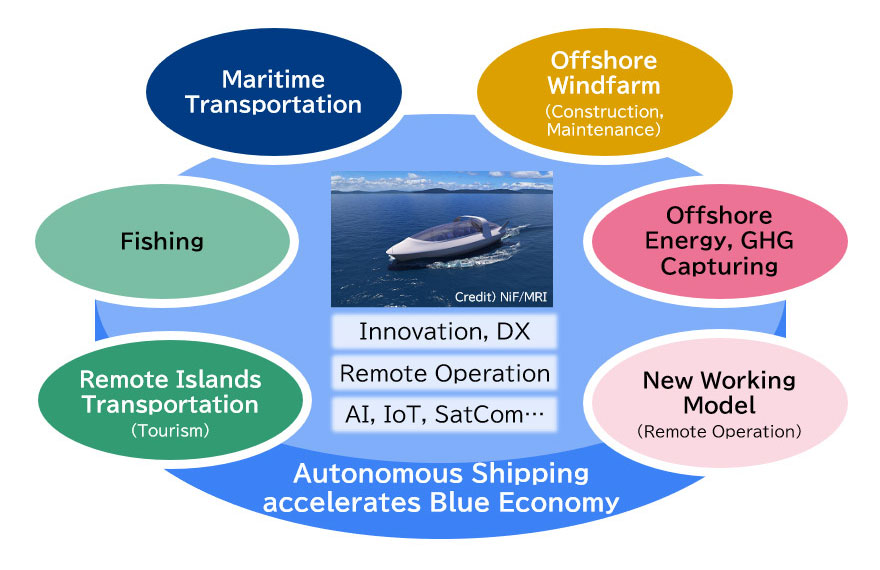In March 2022 a fully autonomous container carrier passed through Tokyo Bay as part of a groundbreaking trial to demonstrate the viability of autonomous ships.* The success is significant because it has proven that the autonomous navigation system developed for the test is safe and reliable even in the congested Tokyo Bay. This marks a milestone on the way to having autonomous ships plying the busy waters of and around Japan.
Great progress in autonomous navigation technology underpinned the trial’s success. Autonomous navigation requires the automation and enhanced precision of collision-avoidance systems along with a practical way for ensuring safety in emergencies at sea. These issues have remained unsolved for years.
The trial showed that all this could be done. The vessel, equipped with an autonomous navigation system, was monitored remotely from its Fleet Operation Center installed in Chiba, a city near Tokyo, using land-based and satellite communications. The ship could also be remotely piloted from the center in the event of an emergency out on the water.
Great progress in autonomous navigation technology underpinned the trial’s success. Autonomous navigation requires the automation and enhanced precision of collision-avoidance systems along with a practical way for ensuring safety in emergencies at sea. These issues have remained unsolved for years.
The trial showed that all this could be done. The vessel, equipped with an autonomous navigation system, was monitored remotely from its Fleet Operation Center installed in Chiba, a city near Tokyo, using land-based and satellite communications. The ship could also be remotely piloted from the center in the event of an emergency out on the water.
*The demonstration was conducted as a part of MEGURI2040, a Japan Foundation program to develop technology enabling autonomous shipping. Mitsubishi Research Institute participated as a member of the technology demonstration consortium
5th Demonstration Test of Fully Autonomous Ship Navigation Successfully Completed
[Figure1] Overview of the DFFAS comprehensive fully autonomous navigation system

Source: DFFAS Consortium

